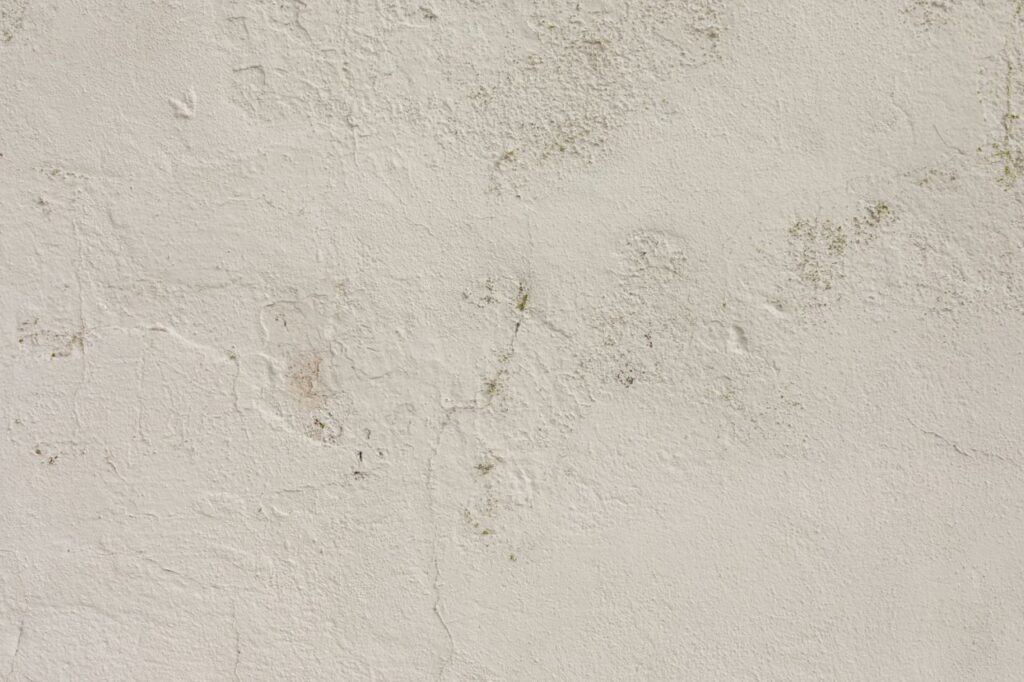When it comes to construction projects, selecting the right materials is crucial for ensuring the quality, longevity, and durability of the build. Plaster vs cement is a common decision for many builders, as both materials offer distinct properties, advantages, and applications. Your choice will depend on the type of project, the environment, and the desired finish. This guide will explore the differences between plaster for interior walls and cement for exterior walls, highlighting their key benefits and helping you choose the right material for your next project.
Let’s Get Straight To The Point
When choosing between plaster vs cement, it’s essential to consider the material’s properties and the specific needs of your project. Plaster is ideal for smooth finishes on interior walls, offering benefits like fire resistance, energy efficiency, and soundproofing.
However, it’s less durable and not suitable for moisture-prone or high-traffic areas. Cement, on the other hand, is perfect for exterior walls and areas needing moisture resistance and durability. It’s best for high-traffic and exterior applications, though it requires longer setting times and skilled labour. Plaster is more cost-effective for interior finishes, while cement offers long-term durability and fewer repairs.
Key Differences Between Plaster and Cement
Understanding the differences between plaster and cement is important in determining the best material for your project. Here are some key distinctions:
1. Application
Plaster is generally applied in thin layers, making it ideal for plaster for residential use and smooth, seamless finishes. Plastering services Melbourne often use plaster to create decorative and aesthetic finishes on interior surfaces.
Cement, on the other hand, is applied in thicker layers and is often used for cement rendering or as a cement plaster for durability in both residential and commercial projects. Cement for moisture resistance makes it suitable for wet areas and external applications exposed to the elements.
2. Finish
One of the primary reasons builders choose plaster for interior walls is its ability to create a smooth plaster finish. Plaster is often preferred for areas requiring intricate designs or plastering for decoration, such as luxury venues, homes, and offices. The smooth surface is perfect for painting or leaving it with a natural finish.
Cement, while durable, usually provides a rougher finish that may require additional work to achieve a smoother surface. It is more commonly used in areas where durability is the priority, such as exterior walls or cement plaster for high-traffic areas.
3. Durability
Plaster is soft and can be more susceptible to damage, particularly in high-traffic or moisture-prone areas. While it offers aesthetic benefits, plaster for residential use is better suited for interior spaces with less exposure to physical wear and humidity.
Cement, by contrast, is highly durable and able to withstand external conditions such as rain, wind, and sun exposure. Cement plaster for durability is ideal for cement rendering Melbourne and any exterior work, especially where moisture resistance is essential.
Pros and Cons of Plaster and Cement
Let’s now examine the pros and cons of gypsum plaster and cement plaster to help you make a more informed decision:
Gypsum Plaster
Pros:
- Smooth Finish: Offers a flawless, smooth surface perfect for plaster for interior walls and plastering for decoration.
- Quick-Setting Plaster: Reduces construction time, allowing projects to proceed faster.
- Fire Resistance: Plaster fire resistance makes it an ideal choice for safety in residential and commercial interiors.
- Energy Efficiency: Helps maintain a stable indoor temperature, reducing heating and cooling costs.
- Soundproofing: Gypsum plaster provides natural noise insulation, which is useful for reducing sound transmission between rooms.
- Eco-Friendly Plastering Materials: Gypsum plaster can be recycled, making it an environmentally friendly choice.
Cons:
- Interior Use Only: Plaster is not suitable for outdoor or wet environments, limiting its use to plaster for residential use and interior applications.
- Less Durable: Plaster is prone to damage and may require frequent repairs in high-traffic areas.
- Higher Initial Cost: Gypsum plaster can be more expensive than cement plaster, although its quick-setting nature can reduce labour costs.
Cement Plaster
Pros:
- Moisture Resistance: Cement for moisture resistance makes it an ideal option for areas prone to humidity, such as bathrooms and kitchens.
- Durability: Cement is highly durable, making it perfect for both cement plaster for high-traffic areas and external applications.
- Versatility: Can be used for both interior and exterior applications, making it a flexible material choice for various building projects.
Cons:
- Rough Finish: Cement generally provides a rougher finish than plaster and may require extra steps to smooth it out.
- Longer Curing Time: Unlike plaster, cement takes longer to set and cure, potentially delaying project timelines.
- Skilled Labour Required: Cement rendering Melbourne and cement plaster for high-traffic areas require skilled professionals to ensure proper application and avoid issues like cracking.
Environmental Considerations
When it comes to sustainability, both plaster and cement have unique environmental profiles.
Gypsum Plaster
- Sustainability: Eco-friendly plastering materials, like gypsum plaster, consume less energy during production, and can often be recycled, reducing construction waste.
- Energy Efficiency: Gypsum plaster’s ability to regulate temperature can help reduce energy consumption in buildings.
- Low Carbon Footprint: Producing gypsum plaster generally has a lower environmental impact compared to cement.
Cement
- Carbon Footprint: Cement production is energy-intensive and has a significant carbon footprint. However, its durability can offset some of the environmental impact by reducing the need for frequent repairs and replacements.
- Long-Term Sustainability: Cement’s long lifespan means fewer resources are required for maintenance and repairs, making it a more sustainable choice in the long run.
Cost Analysis: Plaster vs Cement
Gypsum Plaster
- Initial Costs: Gypsum plaster tends to be more expensive than cement plaster, but its quick setting time and aesthetic benefits may justify the extra cost.
- Maintenance Costs: Plaster may require more frequent maintenance, especially in high-traffic areas or spaces exposed to moisture, making long-term costs higher.
Cement Plaster
- Initial Costs: Cement plaster is typically more affordable upfront. However, the need for skilled labour and longer curing time can add to the overall cost.
- Long-Term Costs: Cement plaster for durability results in fewer repairs and less maintenance, especially in exterior applications exposed to harsh elements.
When to Use Plaster vs Cement
Here’s a quick guide on when to choose plaster for interior walls or cement for exterior walls:
Use Plaster For:
- Interior walls that require smooth finishes and decorative detailing.
- Plaster for complex designs where detailed work is needed.
- Energy efficiency in spaces that require good insulation.
- Soundproofing in areas where noise reduction is a priority.
Use Cement For:
- Exterior walls exposed to weather conditions.
- High-traffic areas that need durability.
- Moisture-prone spaces such as bathrooms and kitchens.
- Long-term structural integrity, particularly in larger commercial projects.
Conclusion: Which Material Should You Choose?
Choosing between plaster for residential use and cement for exterior walls ultimately depends on your project’s requirements. Plaster is an excellent choice for interior surfaces that need smooth, decorative finishes, with added benefits such as fire resistance and soundproofing. However, it is best suited for indoor applications due to its susceptibility to moisture.
Cement, on the other hand, is a durable and versatile material that provides long-lasting protection, especially for cement rendering Melbourne and external applications. It offers superior moisture resistance and durability, making it the ideal choice for high-traffic areas and exterior walls exposed to harsh weather.
By considering factors such as cost, environmental impact, and the specific needs of your project, you can make the right decision and ensure a successful, long-lasting construction project.
FAQs About Plasterer
What Is Plastering?
Plastering is a construction technique involving the application of a mixture of materials like lime, cement, sand, and water onto surfaces to create a smooth and seamless finish.
Is Plastering Considered A Profession?
Yes, plastering is indeed a profession. Achieving desired results requires a blend of technical skills, artistic vision, and practical knowledge.
What Skills Are Required To Become A Professional Plasterer?
Professional plasterers need technical proficiency in mixing techniques, surface preparation, and application methods. Soft skills like attention to detail, physical stamina, and effective communication are also crucial.
How Can One Enter The Plastering Profession?
Entering the plastering profession can be achieved through several pathways, combining education, hands-on training, and certifications:
- Apprenticeships: Learn through hands-on training and classroom instruction.
- Vocational Training: Enroll in technical courses to gain foundational skills.
- On-the-Job Training: Start as a laborer and learn directly on-site.
- Certifications: Obtain necessary certifications like the CSCS card (in some regions).
- Self-Learning: Practice independently, though formal training is preferred.
What Are The Career Prospects In Plastering?
Plastering offers a wide range of career prospects, from working on residential projects to large commercial constructions. Experienced plasterers can advance to supervisory roles, manage their businesses, or specialise in niche areas such as decorative plastering or historic restoration.



